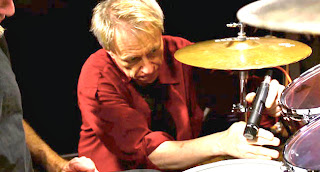"Before you start swapping gear, know that the three most important factors in getting the sound you want are mic position, mic position and mic position. Get the instrument to make the sound you want to record first, then use the cover-your-ears technique to find the sweet spot, position the mic, then listen. Remember that if you can’t hear it, you can’t record it. Don’t be afraid to repeat as much as necessary, or to experiment if you’re not getting the results you want.
That said, the following are some general issues and techniques to consider before placing a mic:
1. One of the reasons for close-miking is to avoid leakage into other mics, which means that the engineer can have more flexibility later in balancing the ensemble in the mix. That said, give the mic as much distance from the source as possible in order to let the sound develop, and be captured, naturally.
2. Mics can’t effectively be placed by sight until you have experience with the player, the room you’re recording in, the mics you’re using, and the signal path. If at least one of these elements is unknown, at least some experimentation is in order until the best placement is found. It’s okay to start from a place that you know has worked in the past, but be prepared to experiment with the placement a bit since each instrument and situation is different.
3. If the reflections of the room are important to the final sound, start with any mics that are used to pick up the room first, then add the mics that act as support to the room mics.
4. From 200Hz to 600Hz is where the proximity effect often shows up and is one reason why many engineers continually cut EQ in this range. If many directional microphones are being used in a close fashion, they will all be subject to proximity effect. and you should expect a buildup of this frequency range in the mix as a result.
5. One way to capture a larger than life sound is by recording a sound that is softer than the recording will most likely be played back. For electric guitars for instance, sometimes a small 5 watt amp into an 8 inch speaker can sound larger than a cranked full Marshall stack."You can read additional excerpts from The Recording Engineer's Handbook 3rd edition and other books on the excerpts section of bobbyowsinski.com. You can also check out the Audio Recording Techniques video course on Lynda.com. Click here for a free 7 day trial.
----------------------------------
You should follow me on Twitter and Facebook for daily news and updates on production and the music business.
Don't forget to check out my Music 3.0 blog for tips and tricks on navigating social media and the new music business.



3 comments:
So as in #5 .. if the setup is only 5 watts out to an 8 inch speaker, what microphone pattern is typically used here? How's that different than the stacks?
Don't overanalyze this. It's just that you don't need a big amp for a big sound. Any standard size mic will capture the sound of a small speaker because it will pick up more of the surface area so the sound will be more balanced. A smaller amp is also easier to overdrive without the use of pedals.
Ok,thank you..I get your focus here.
Post a Comment